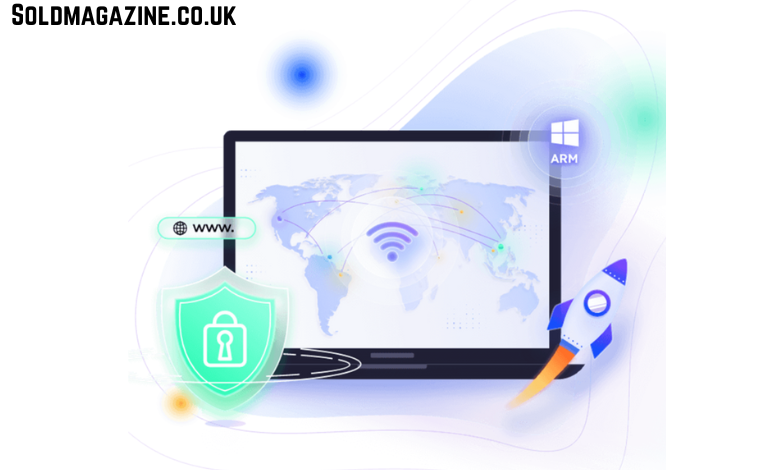Convenience is the reason customers stay loyal.
That is the foundation of omnichannel ecommerce. It is not about having a website, an app, and a physical store. It is about making those channels feel like parts of the same conversation. Development services that specialize in ecommerce create the invisible thread connecting them, so shoppers never feel a break when they switch devices or platforms.
In this article we will look at how professional ecommerce development and how omnichannel differs from multichannel, the components that matter most, the development practices that make it possible, and the trends that will shape the next phase.
What Defines an Omnichannel Ecommerce Experience?
Differences Between Multichannel and Omnichannel
Multichannel means presence. Omnichannel means connection. A brand with a site, an app, and social media profiles may check the multichannel box, but if inventory lags between systems or promotions differ across channels, the experience feels fragmented. Omnichannel removes those seams. The cart you build on your laptop waits for you on your phone. A return started online is finished in-store. Every channel knows the same story.
Importance of Consistency Across Touchpoints
Consistency creates confidence. Customers want the same price, the same promotions, and the same support whether they shop in-app or in a physical location. When the story matches, people trust the brand and feel more comfortable moving across touchpoints. That trust grows into repeat visits and higher lifetime value.
Key Benefits for Customers and Businesses
For customers, omnichannel means ease, flexibility, and fewer frustrations. For businesses, it means more accurate data, higher conversion, and a deeper understanding of how people move from awareness to purchase. A consistent experience produces cleaner insights and a more reliable pipeline for growth.
Core Components of Omnichannel Ecommerce Development
Unified Customer Data Management
Customer data must flow into a single view that consolidates preferences, purchase history, and support interactions. This single record prevents duplication, aligns marketing with reality, and makes personalization consistent.
Integrated Inventory and Order Management Systems
Inventory cannot exist in silos. A central system updates stock levels across online stores, apps, and physical locations in real time. Order management synchronizes fulfillment, so customers can choose delivery, pick-up, or returns without facing conflicts between systems.
Cross-Platform User Interface Design
Interfaces must feel familiar across devices. The navigation, tone, and design should carry the same identity whether accessed on mobile, desktop, or in-store kiosks. Cross-platform design reduces friction and makes the brand recognizable in every context.
How Ecommerce Development Services Enable Omnichannel Retail
API-Driven Architecture for System Integration
APIs make integration possible. Payment gateways, logistics providers, and marketing tools plug into a flexible architecture that exchanges data cleanly. An API-driven design allows services to change independently while still staying part of the whole.
Real-Time Synchronization of Inventory and Pricing
Real-time updates protect against the classic frustrations of ecommerce: out-of-stock orders and mismatched prices. A development service builds synchronization pipelines that reflect stock levels immediately across every channel, reducing cancellations and improving customer trust.
Personalized Marketing and Customer Engagement Tools
Personalization keeps communication relevant. Omnichannel ecommerce systems feed insights from behavior into campaigns that reach customers at the right time with the right offer. Development teams implement tools for dynamic recommendations, triggered messages, and cross-channel loyalty programs.
Challenges in Building Omnichannel Ecommerce Solutions
Dealing with Complex Data and System Silos
Legacy systems often sit in different departments. Development services must untangle those silos and create secure bridges between them. Without a unified data layer, the customer experience will always feel fragmented.
Ensuring Reliable Performance and Scalability
An omnichannel solution must handle spikes during sales events and promotions. If traffic brings one channel down, the promise of seamlessness breaks. Architects build scalable systems with load balancing, caching, and distributed databases to support steady performance.
Managing Customer Experience Across Devices
A customer might discover a product on social media, compare it on the website, and buy it through the app. If the journey feels inconsistent, the purchase may be lost. Development must focus on design and testing that covers this device-hopping behavior.
Best Practices for Optimizing Omnichannel Ecommerce Websites
Responsive and Mobile-First Design Strategies
Most interactions start on a mobile device. Responsive design ensures the site looks and works well on any screen. A mobile-first approach prioritizes speed and simplicity for the device that drives most traffic.
Streamlining Checkout and Payment Processes
Checkout should be short, clear, and supportive of preferred payment methods across regions. Saved carts, one-click payments, and digital wallets reduce friction and keep conversions high.
Employing AI and Analytics to Enhance Engagement
AI helps predict what customers want next. Analytics show where they drop off. Combining the two gives businesses a path to optimize experiences in ways that increase satisfaction and loyalty.
Checklist of best practices
- Unified logins across platforms with secure authentication
- Predictive search that reduces time spent finding products
- Smart recommendations powered by browsing and purchase history
- Loyalty integration that works across online and offline stores
- Customer service channels connected to the same record
- Clear, mobile-ready promotions that match every channel
Measuring the Success of Omnichannel Ecommerce Strategies
Key Performance Indicators (KPIs) to Track
Performance should be measured against customer-centric and business-centric KPIs. Conversion rates, average order value, cart abandonment, and customer retention offer a balanced view of how well the omnichannel approach is working.
Customer Behavior Insights and Feedback Loops
Analytics tools track how customers move between channels. Surveys and feedback forms reveal where experiences succeed or frustrate. Closing the loop with real adjustments shows customers their voices shape the journey.
Impact on Sales, Loyalty, and Brand Perception
The end result should be clear in revenue, loyalty scores, and reputation. When the brand is known for reliability and ease, customers advocate for it. That reputation multiplies the effect of technical investments in omnichannel development.
Future Trends in Omnichannel Ecommerce Development
Integration of Emerging Technologies like AR and IoT
Augmented reality enables virtual try-ons, while IoT devices can simplify reorders. Development teams integrate these technologies to add new, engaging touchpoints that expand the customer journey.
Voice Commerce and Conversational AI
Voice assistants and chatbots make purchasing more natural. Customers can place orders, check shipping, and request support through speech, with data syncing instantly across all systems.
Advanced Personalization Powered by Machine Learning
Machine learning refines recommendations and adapts experiences in real time. Customers feel understood, and businesses gain higher conversions from experiences that evolve with behavior.
Summarizing the Power of Omnichannel Ecommerce Development
Omnichannel ecommerce makes every touchpoint feel like part of the same relationship. Expert development services build the systems, interfaces, and integrations that make this possible. The result is consistency across channels, personalization that feels respectful, and a shopping experience that earns loyalty.
Businesses that invest in omnichannel development gain more than technology. They gain trust, repeat customers, and a reputation for simplicity in a market where complexity is the norm.
With over 15 years of global experience spanning 5 continents and 10+ industries, Devsinc‘s team of thoroughly vetted IT experts truly grasp the nuances of the digital landscape, positioning them as a preferred partner for businesses driving innovation in the digital age.




